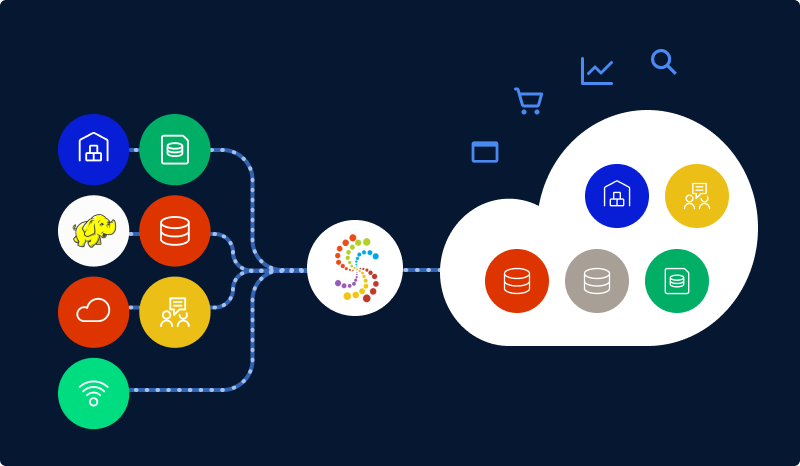Data integration has emerged as one of the most important aspects of Business Operations. In the last 2-3 years, a majority of the global business leaders have begun to identify data integration platforms as a critical component in their digital transformation efforts, tying different types of data within a single unified analytical platform to solve complex problems.
In this article, I have highlighted the various facets of data integration and how these inflict a strong effect on enterprise-level reorganization, called digital transformation.
Data integration essentially means bringing together all the raw and processed data relevant to the business operations from disparate sources into a single pane, unified master data management platform so as to provide a robust holistic foundation for data analyses, reporting, remodeling, and re-engineering. The key users of DI platforms would be data analysts and data scientists who wrangle data from various disparate sources to gain hidden insights by accessing the untapped information and uncovering the patterns that help solve complex problems. Different organizations try to define DI based on their ability to merge databases and how they create an ecosystem between users, partners, connectors, and analysts.
So, you would be utilizing data integration in some way or the other if you deal with these functions:
Enterprise data management
In the modern context, an enterprise collects, creates, and analyses tons and tons of different types of data. These could be sourced from marketing, sales, advertising, HR, IT, Finance, and admin departments, and would include information pertaining to important components of the organization. These are labeled as Enterprise Data Management or EDM- which may include data collected from external as well as internal sources.
As experts suggest, EDM is the pivot for strategic management of organizational goals and mission. EDM is managed by the same set of professionals who are responsible for Data integration – IT administrators, Database managers, IT project managers, all reporting to a Chief Information Officer (CIO), or a Chief Data Officer – CDO.
Master Data Management
MDM as it is referred to as across the IT industry, master data management is a subdomain associated with EDM but distinguished based on the end-user system such as an HRIS, ERP or CRM or an Enterprise Content management system. In order to fully benefit from the various information lakes involved in building out the MDM, organizations require strong data integration models.
It is hard to assimilate master data and therefore, even harder to analyze for key business operations. Based on the kind of organizations, a Business Operation would produce or require to work with any of these data types:
- Unstructured data
- Transactional data
- Metadata
- Hierarchical data
- Reference data
- Customer data
To ‘master’ any data integration process, one should be able to understand the contextual flow of the CRUD cycle – CREATE, READ, UPDATE, DESTROY and SEARCH.
Enterprise Reorganization Around DI
Data integration ROI
Every organization is posing as a data-driven company that not only mines a large volume of data but also offers key services related to data management, such as data as a service (DaaS), or AI as a service, or Business Intelligence as a Service.
Manufacturing, Media and Entertainment/ Online Marketing, Financial data management, and Healthcare industries have been identified as the top destinations that place the highest priority on the adoption of data integration for various applications. With so much happening in the field of data integration and data analytics, it is worth spending some time and effort to truly understand the exact nature of how the technology innovations in the Cloud and IT industry require a refined approach to managing and integrating data for key operations.
Based on how teams manage their master data and enterprise data, one can apply data integration to solve problems arising from business transactions and interactions. For example, Operations teams use data integration results to build a reliable pipeline that enables them to support automated inventory management using AI and machine learning initiatives. Similarly, manufacturing uses DI to ease bottlenecks in the supply chain, workforce management, and compliance in QC. Data matching, harmonizing and de-duplication are some of the trending phrases used within these industries to demonstrate leading data integration use cases.
With more than ninety percent of the organizations adopting Cloud or Hybrid Cloud ecosystems to modernize their existing business operations, the role of data integration deployment at important junctures has opened new avenues for key functions such as Predictive Intelligence, Business Intelligence, Robotic Process Automation, and Auto Machine Learning (also called as AutoML).
